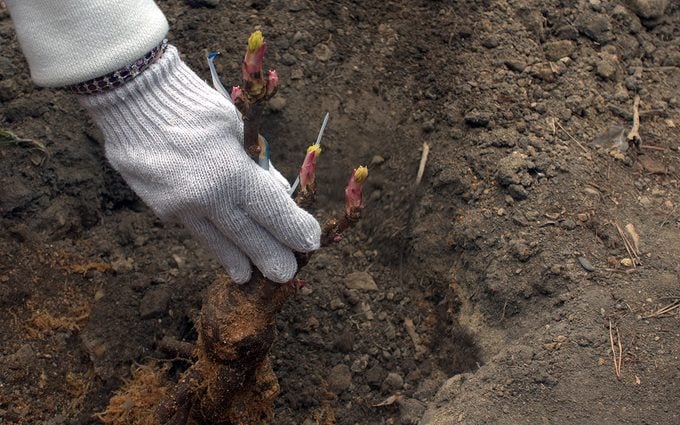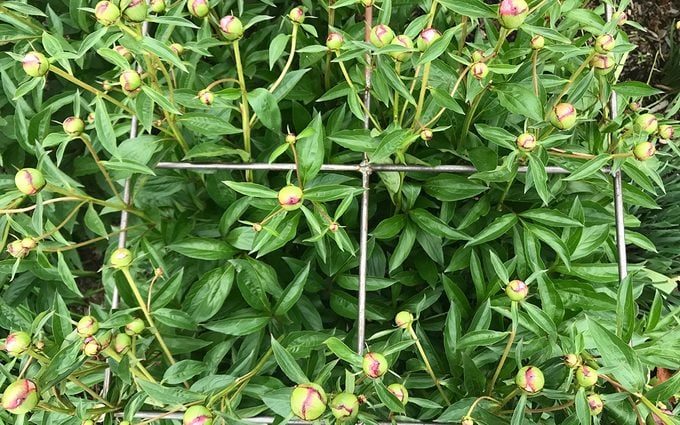Gorgeous, old-fashioned peonies with showy, full flowers will catch the eye of all who pass by.
These perennials are so long-lived that theyre often handed down from one generation to the next.
Theyre a popular choice for bouquets and cut flower arrangements.

Peonies care is important to understand, especially with new plantings.
However, once theyre established, youll be rewarded with beautiful spring and summer flowers for decades.
Types of Peonies
The peonies with beautiful blooms in gardens and along fences are herbaceous peonies.

They grow in zones 3-8 and can reach 2-4 feet in height.
There are endless varieties within the different bloom categories.
Peonies, however, can be fussy about being moved.

Its best to plant them in the best location the first time you bring them home.
So do your planning now!
Add someedible plantsto your landscape, too.

Choose a location in your landscape that gets 6 to 8 hours of full sunlight.
Space peony plants about 4 feet apart, so they arent crowded.
These factors also reduce the chance that powdery mildew or blights will affect the plants.

Plan to put them in the ground about 6 to 7 weeks before the ground freezes.
Root damage will make it harder for your plant to get established, so handle them carefully.
(On tree peonies, look for the spot where the root and stem are grafted.)

Dig a hole twice as wide as the root or root ball and about 18 inches deep.
Loosen the dirt around the inside of the hole.
Then, build up a mound of compost-amended soil in the center of the planting hole.

Carefully backfill the hole with soil, and then firm up the soil over the plant.
Water this spot thoroughly.
Other than water, your peonies wont need much from youexcept your patience in the first couple of seasons.

(Like thesepeony supportsfrom Gardeners Supply.)
One note: only herbaceous peonies get cut back for the winter.
Many gardeners divide their peonies at this stage, to help reinvigorate the flowering potential.

Then, plant the clumps as outlined above.
Troubleshoot Peony Problems ASAP
Once peonies are established, they are a very low maintenance plant.
However, there are some common problems that gardeners run into.

Blackening peony buds or stems are signs of a fungal disease called botrytis.
Cut away and remove affected buds and stems to keep botrytis from spreading.
In the fall when you cut peonies back, remove all the detritus so fungi wont infect spring plants.

After the second or third year, your peonies should have lots of flowers.
Another reason is if the peony root was planted too deep.
When the eyes are too deep in the soil, the plants will only grow foliage.

Nataliia Sirobaba/Getty Images
Well, it just wouldnt be a peony without all those ants!
Since ants are a big problem in the house, gardeners usually worry that ants are hurting their peonies.
The fact is theyre harmless.

Ants are attracted to the sweet droplets on the outside of the peony buds.
They may actually be helping plants by eating aphids and other pests that are also drawn to this nectar.
Theres no need to reach for the insecticide.

Ants cause no harm and will move on as the blooms open.
Find moregardening solutionsto common problems.
We recommend our users to update the online window.


































